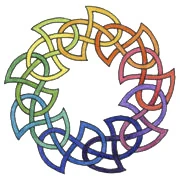Help GuideWhether you are new to the Wiki, or an old hand, there are occasions when you may need a bit of help to figure something out. This page is intended to list the most useful "Help:" pages. You may find it convenient to refer to this page for guidance when problems arise. Its easy to edit a page on the Wiki, but with experience you're bound to run into more complex problems. This page may help you find the answers, though you can always drop a message on someone's "talk page" and they may be able to help you. But if you see a problem that doesn't seem to have a solution, please let us know---or if you figure out a solution to a problem, you might want to create a help page of your own to explain your discovery. Hey, we all need help from time to time, and we all go farther, faster, the more we help one another. |
Principal Help PagesHere's a set of links to some of the most useful general purpose help pages On this Genealogy Wiki: Wikia and Wikipedia help pages:
|
Table of Contents |
Just Starting?
(If you want, you can practice in the Sandbox first. It's there for "practicing", or experimenting with something. It's a good place to get used to how the wiki works.)
|
Templates
|
